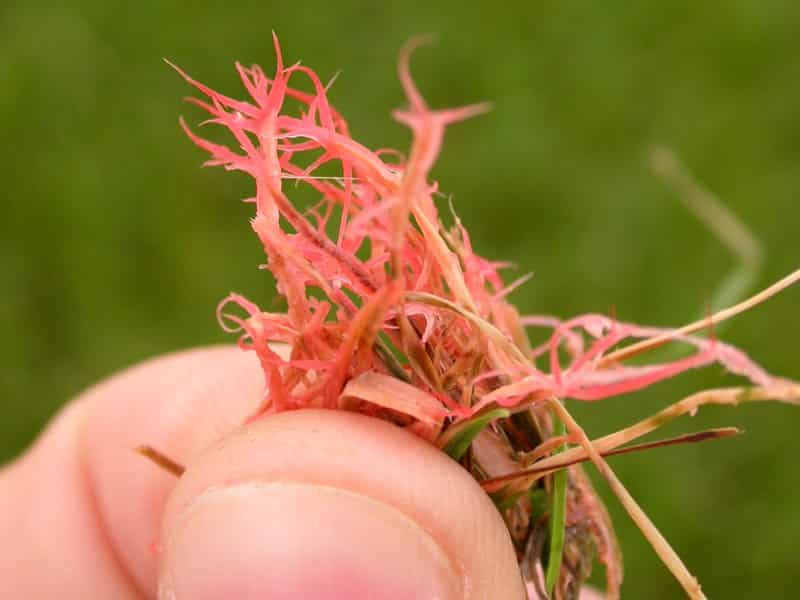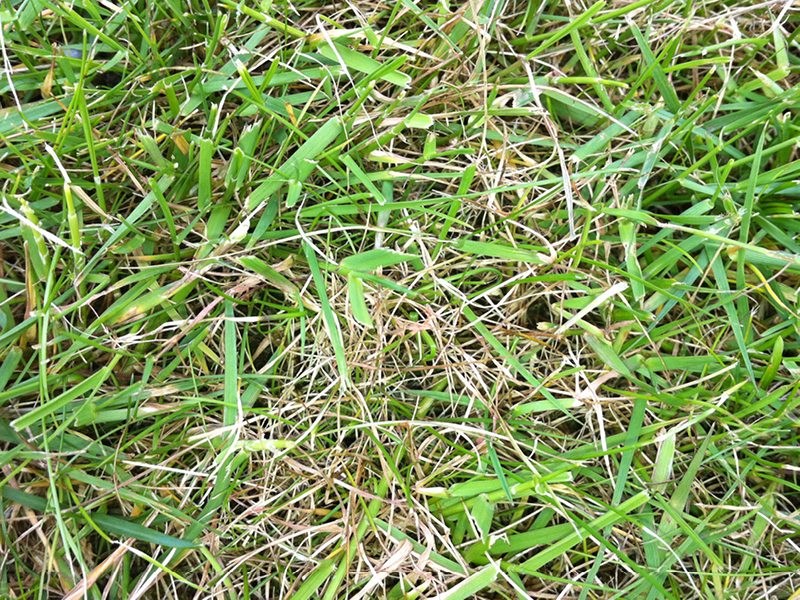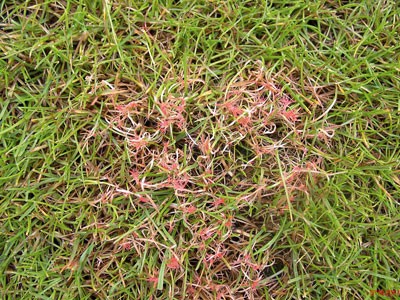

What is red thread?
Red thread is a fungal lawn disease caused by the fungus Laetisaria fuciformis. The effects of the disease can be seen throughout the year, but mostly through the spring/summer months and/or during periods of high humidity. The occurrence of the disease is most evident after periods of wet weather, especially towards the end of summer when humidity is high.
How do I know if my lawn has red thread?
Initially, the lawn will begin to show small patches of grey/brown turf:


On closer inspection the grass plant will have small, red needles protruding from the diseased leaf:


How did red thread get in my lawn?
Fungal diseases spread through spores. Red thread spores can be carried by the wind, insects or birds. Most lawns have the red thread disease present in them. However, it
won’t cause damage until the weather conditions are correct for its growth. Although high humidity is the main cause of red thread, this fungal disease can also be seen in lawns that are suffering from plant stress. This is usually caused by various different factors, including poor cutting practices, drought, thatch and compaction.
How do I control red thread in my lawn?
Red Thread can controlled in the short term by applying a fungicide treatment. This will tackle the problem head on, and prevent it from returning for up to 10 weeks.
To help reduce the onset of any future red thread, it is best to improve the overall condition using Green Man Lawn Care Booster Treatments (scarifying, aerating and overseeding) on an annual basis combined with a seasonal fertiliser programme.
It should be noted that Red Thread is a very common fungal disease and controlling it can be difficult. Annual recurrence is very common.
Is it possible to eradicate Red Thread from my lawn?
No. Red Thread is a pathogenic fungal disease. Just like fungal diseases in humans, they are very difficult to completely eradicate and the only methods currently available to deal with the problem are control methods known as fungicides.
Is it possible to completely control Red Thread in my lawn?
Yes. Pre-emergence fungicides will help to reduce Red Thread. Pre-emergence fungicides are applied in early spring, then again through the summer and help to prevent the growth of the disease. However, just like any fungal disease, it is not always 100% effective.
